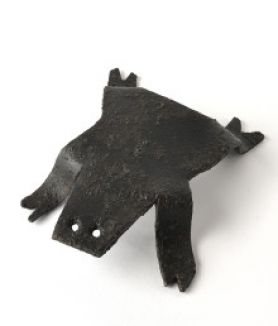Ex-voto in the shape of a toad

The saints in the Roman Catholic church are perceived as intercessors between God and men. They are given material form as statues in churches and sanctuaries and the faithful turn to them for help and protection.
Supplicants at times give substance to their prayers (or give thanks for one that has been granted) with an ex-voto or votive object. To heal a bodily ailment, for example, the ex-voto takes the form of the afflicted body part: an arm, a leg (or even the whole body). These rudimentary objects in iron or wood are placed as close as possible to the statue of the interceding saint, in the hope that he will thus act on the afflicted part.
Wrought iron toad figurines were sometimes brought to places of pilgrimage by women who were infertile, these prolific egg-layers being seen as fertility symbols.
Toads are believed to have been revered in pagan times and, despite the efforts of Christianity to demonise them, suggesting that toad spittle was toxic, they continued to be seen in a positive light. Thus, a toad-shaped pebble was a lucky charm and it was thought that a "domestic" toad or Hüsskrott taking up residence in the cellar would protect the household from misfortune.
